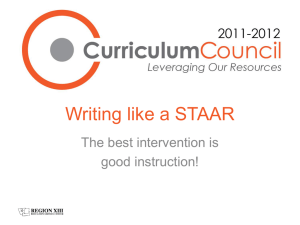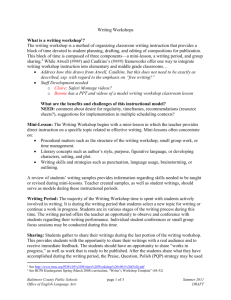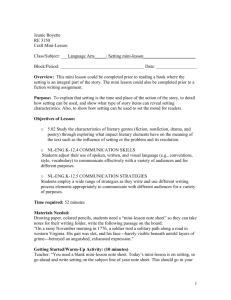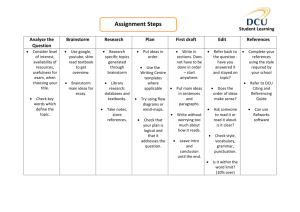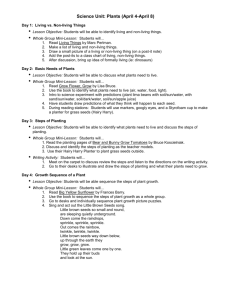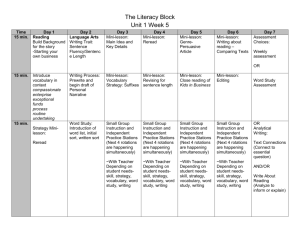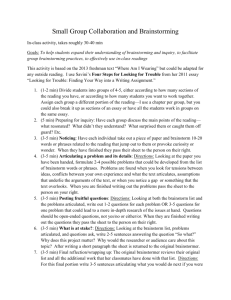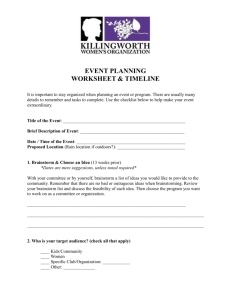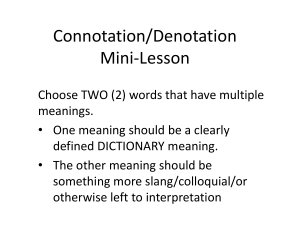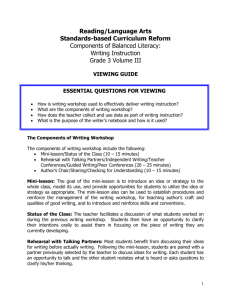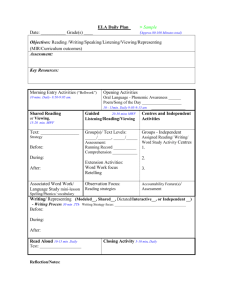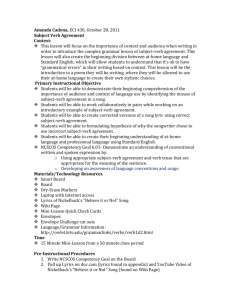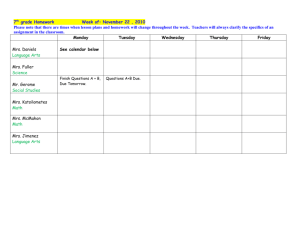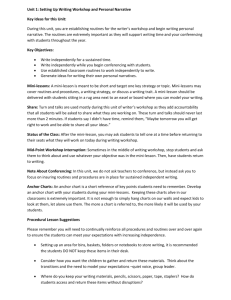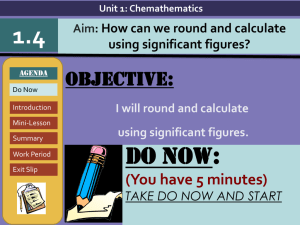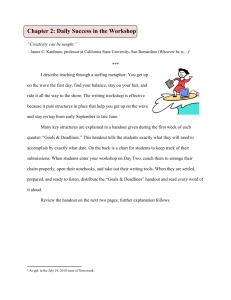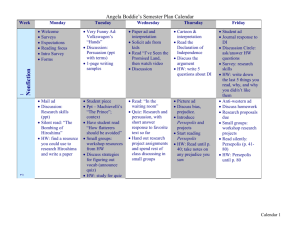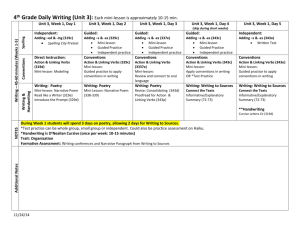Writing Instruction Model - Community Consolidated School District 62
advertisement
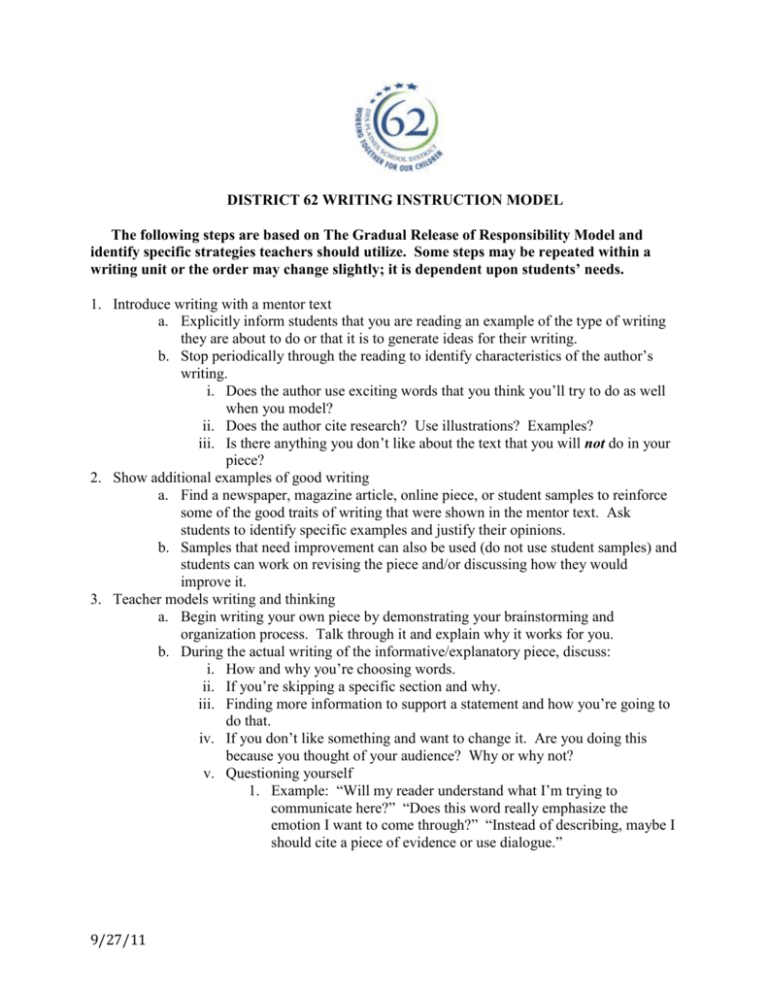
DISTRICT 62 WRITING INSTRUCTION MODEL The following steps are based on The Gradual Release of Responsibility Model and identify specific strategies teachers should utilize. Some steps may be repeated within a writing unit or the order may change slightly; it is dependent upon students’ needs. 1. Introduce writing with a mentor text a. Explicitly inform students that you are reading an example of the type of writing they are about to do or that it is to generate ideas for their writing. b. Stop periodically through the reading to identify characteristics of the author’s writing. i. Does the author use exciting words that you think you’ll try to do as well when you model? ii. Does the author cite research? Use illustrations? Examples? iii. Is there anything you don’t like about the text that you will not do in your piece? 2. Show additional examples of good writing a. Find a newspaper, magazine article, online piece, or student samples to reinforce some of the good traits of writing that were shown in the mentor text. Ask students to identify specific examples and justify their opinions. b. Samples that need improvement can also be used (do not use student samples) and students can work on revising the piece and/or discussing how they would improve it. 3. Teacher models writing and thinking a. Begin writing your own piece by demonstrating your brainstorming and organization process. Talk through it and explain why it works for you. b. During the actual writing of the informative/explanatory piece, discuss: i. How and why you’re choosing words. ii. If you’re skipping a specific section and why. iii. Finding more information to support a statement and how you’re going to do that. iv. If you don’t like something and want to change it. Are you doing this because you thought of your audience? Why or why not? v. Questioning yourself 1. Example: “Will my reader understand what I’m trying to communicate here?” “Does this word really emphasize the emotion I want to come through?” “Instead of describing, maybe I should cite a piece of evidence or use dialogue.” 9/27/11 4. The group creates a piece of writing a. As a class, brainstorm some ideas to write about. Choose a specific topic and narrow, if needed. b. Begin drafting a class piece of writing. Assist the group in questioning themselves and being careful about their word choice. Discuss certain disagreements such as whether to use the word “unhappy” or the phrase “feeling blue” and come to consensus. 5. Students brainstorm and write on their own a. Assist students individually and in small groups as they complete brainstorming. b. Allow older students to choose whether or not to brainstorm or begin writing so that they may develop their own writing process. c. Remind students about the strategies you used for yourself and as a group. 6. Peer editing a. Have students peer edit for one specific purpose. For example, only check for organization and be specific in feedback they provide. b. When applicable, have students use a rubric. c. This is a good opportunity for students to check each other’s conventions. 7. Conferencing a. Meet with students individually about their first draft. b. Focus on the overall piece of writing first to reinforce to the student that the importance of writing is to communicate. c. Ask students what they feel their strengths are in their piece. What do they want to improve on? d. State strengths of their writing; reinforce what they are doing well and be specific. e. Identify 2-3 goals for them to work on taking into account the students’ goals as well. Explain each goal, why you set it, and ask if they understand each one. Ask which goal they are going to work on first. 8. Formative assessment to determine instruction a. After conferencing (or another informal assessment such as working individually with students as they draft) with the majority of students, determine if there needs to be any re-teaching or a mini-lesson on an area of weakness that you saw the majority of student having (citing a source, providing examples, organization, etc.). b. Consider flexible grouping. If 4-5 students need help with organization, meet with them separately for the mini-lesson. 9. Re-teaching or mini-lesson a. Use 10-15 minutes to re-teach or give a mini-lesson. b. Explicitly tell students the purpose of the re-teaching or mini-lesson. i. Example: “After conferencing with all of you on your papers, I noticed that we have all done really well on organization. Great job! I would like to review how to cite sources though. Most of us described the facts instead of quoting them, which isn’t always the best choice. Let’s take a look…” 9/27/11
